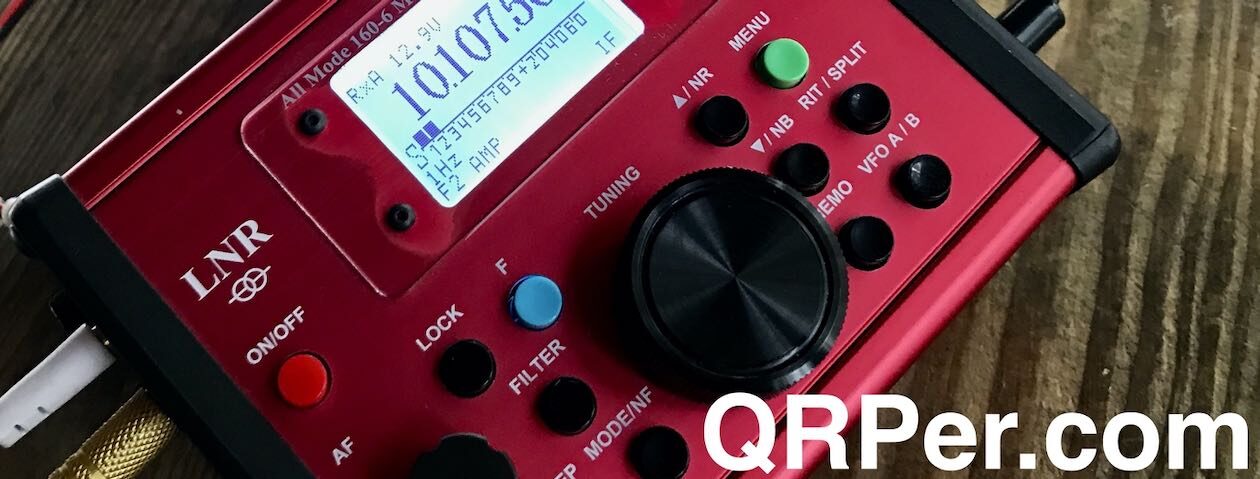The other day, I was thinking…
If 2014 Thomas looked at 2024 Thomas’ QRP radio inventory, he wouldn’t believe the number of radios he’d accumulated in a mere decade.
It’s a little insane, really.
The thing is, over the years, I’ve picked up some great QRP bargains at local hamfests and via various online classifieds. While it’s not exactly “chump change,” you can often find good used QRP radios for less than $300.
Sometimes it’s hard (for me) to pass up those deals.
One such deal was a local fellow who wanted to sell his Ten-Tec R4020 a few years ago. He listed it for $125, and there weren’t any takers for a few days. (Keep in mind, this was a wee bit before our current CW Renaissance.)
I contacted him and snapped it up. I thought the R4020 might be a fun little two-band radio for POTA and SOTA adventures.
I was right!
 The R4020 is an incredibly fun radio to use in the field.
The R4020 is an incredibly fun radio to use in the field.
The audio is superb. It has a low noise floor, great sensitivity, and a well chosen filter width. What the R4020 lacks in features, it makes up for with audio fidelity, in my opinion.
I look forward to each and every activation with this QRP wonder.
Speaking of which…
Tuttle Educational State Forest (K-4861)

On Wednesday, January 3, 2024, I made some time in the afternoon to stop at Tuttle Educational State Forest.
I believe I was on the way back to the QTH that afternoon after an overnight with my folks in Hickory, NC.

I love Tuttle, but it had been a while since I completed an activation here. In the activation video (below) I said it had been a couple of months, but later I checked and realized it had been four months! Wow! Hard for me to believe it had been that long!

That day, the park was void of visitors. I was the only person in the parking lot. No surprise here: kids were just heading back to school after a long Christmas break, so there were no field trips on site.
Since there was no competition in the picnic area, I decided to grab a site I might not have actually used before in previous Tuttle activations. I’m evidently working on my WATPT (Worked All Tuttle Picnic Tables) award!
First, a quick inventory…

Before heading to Hickory the previous day, I grabbed the little Blue Ridge Outdoors pouch that held my R4020 and much of the supplies I’d need to get on the air.
I knew, though, that this wasn’t a fully self-contained field kit. Not yet, at least. I hoped that between my main radio gear pack and what I had in the car, I could piece together an entire station.
In my activation video, I speak to the mental checklist I use to make sure I have all of the necessary components to complete my field kit. I did this on site as I set up (typically, this is done prior to leaving the QTH).
Fortunately, I had everything I needed, including an external speaker.
Side note: Some of you might notice the (disproportionately) large Bioenno battery I used during this activation. Yes, it’s crazy overkill for this wee QRP radio. I’d normally use a 3Ah battery, but frankly, I need to exercise my 15Ah battery from time-to-time, too! It gets the least amount of field time because I normally save it for my QRO radios that I use so little in the field.
Gear:
 Note: All Amazon, CW Morse, ABR, Chelegance, eBay, and Radioddity links are affiliate links that support QRPer.com at no cost to you.
Note: All Amazon, CW Morse, ABR, Chelegance, eBay, and Radioddity links are affiliate links that support QRPer.com at no cost to you.
On The Air
 I’d packed my PackTenna Mini 20 meter EFHW with the R4020.
I’d packed my PackTenna Mini 20 meter EFHW with the R4020.
My 40 meter PackTenna EFHW would have been a better choice–since it would have been resonant on both of the R4020’s bands (20 and 40M)–but at the time of day I was operating, I knew 20 meters would serve me well, so 20 meters it was! Continue reading Major POTA fun with the TEN-TEC R4020 and PackTenna 20M EFHW! →



















































































